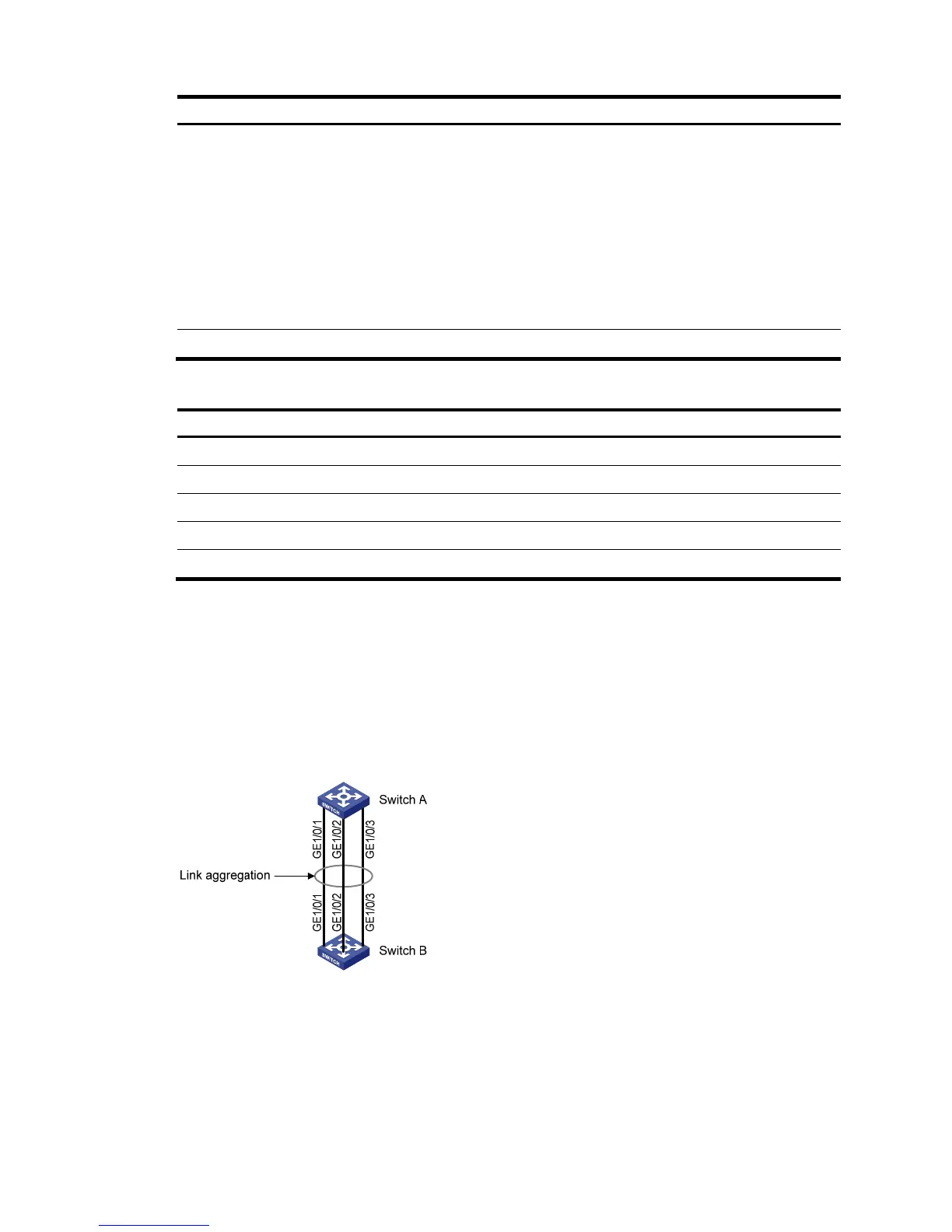• C—The sending system considers the link is aggregatable.
• D—The sending system considers the link is synchronized.
• E—The sending system considers the incoming frames are collected.
• F—The sending system considers the outgoing frames are distributed.
• G—The sending system receives frames in the default state.
• H—The sending system receives frames in the expired state.
Oper Key Operational key of the local port.
Table 69 Field description
Field Descri
Unit Number of the remote system
Port Name of the remote port
Partner ID LACP priority and MAC address of the remote system
Partner Port Priority LACP priority of the remote port
Partner Oper Key Operational key of the remote port
Link aggregation and LACP configuration example
Network requirements
As shown in Figure 198, aggregate the ports on each device to form a link aggregation group,
distributing incoming and outgoing traffic across the member ports.
Figure 198 Network diagram
You can create a static or dynamic link aggregation group to achieve load sharing.
Method 1: Create static link aggregation group 1
1. From the navigation tree, select Network > Link Aggregation.
2. Click Create to enter the page as shown in Figure 199.
3. Conf
igure static link aggregation group 1:

